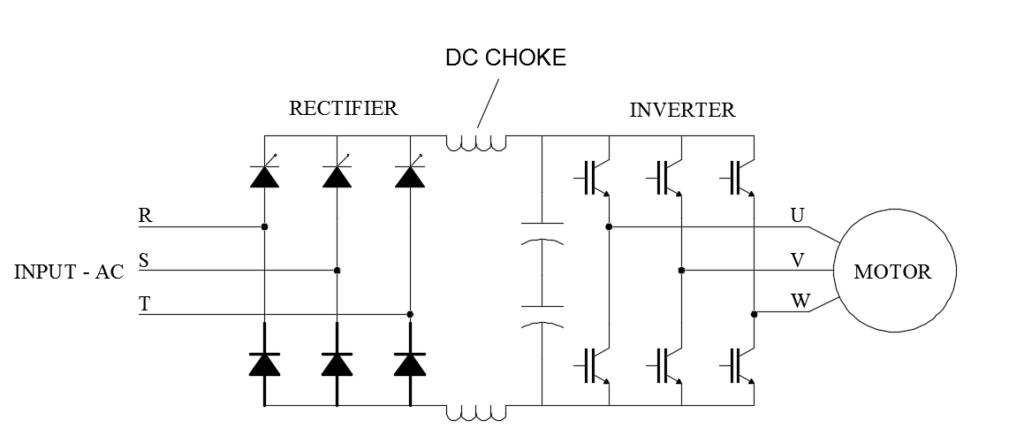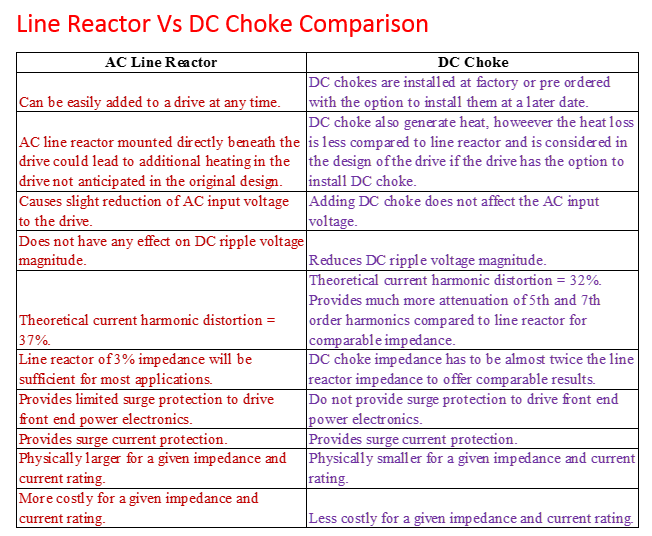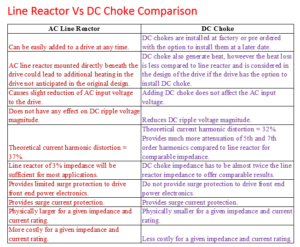Line Reactor
Line reactor as used in VFD/VSD application is an inductive component used in the line side or supply side for harmonics mitigation, voltage buffering, reduce commutation notches, reduction of differential mode noise etc.
For a detailed discussion of AC Line Reactor click here.

Drive schematic showing position of AC Line Reactor
Line Reactors are specified based on the current rating (Amps) and the inductance (mH). Current rating is based on the drive full load rating, while the inductance is expressed in milli-henry (mH) or more commonly expressed as %Z, % impedance or Uk. This %Z or %impedance convention is derived from the practice used with the transformers. %impedance of the line reactor is the percentage of the drive impedance at full load.
DC Choke
A DC choke (DC Link Choke) is used between the rectifier section and the bus capacitor section of a variable frequency drive. For a detailed discussion of DC choke click here.

Drive schematic showing position of DC Choke
DC choke offers many benefits some of which are:
- Controlling line side harmonics by limiting the peak value of the line current.
- Reduces the ripple in DC bus voltage, there by helping reduce the heat loss in the bus capacitor and prolong its life.
- Reduced AC voltage drop compared to line reactor.
- Reducing the transient switching current magnitude in to the DC capacitor after a voltage sag (dip) event.
Line Reactor vs DC Choke Comparison
Line reactor as well as DC choke helps reduce supply side harmonics. They both have advantages and disadvantages. Below is a comparison table between AC Line Reactor and DC Choke.

Line Reactor vs DC Choke

